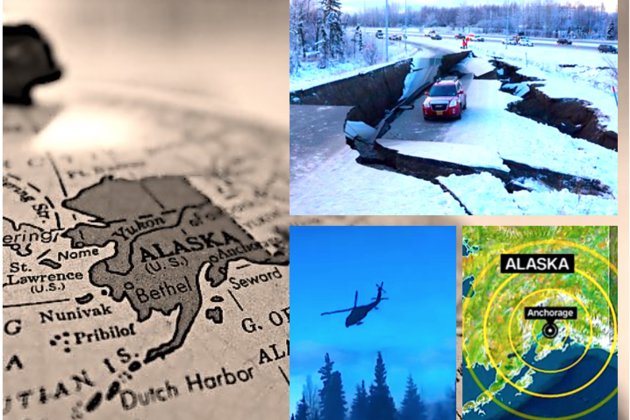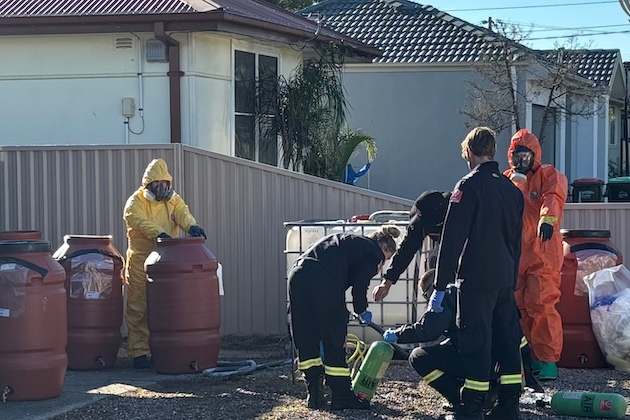2LT International News
Over 230 small quakes strike Alaska after massive 7.0 tremor
Dec 3, 2018
ANCHORAGE, Alaska – Following the massive tremor on Friday morning, which measured magnitude 7.0 and struck 10 miles northeast of Anchorage, residents of the largest and most sparsely populated U.S. State have witnessed more than 230 small earthquakes.
On Sunday, the U.S. Geological Survey (U.S.G.S.) said that Alaska had experienced at least smaller 230 earthquakes since the first massive tremor, which knocked out power, tore apart several roads, and caused damage to buildings near Anchorage.
The U.S.G.S. said that the largest aftershock they registered since Friday was in the city of Anchorage that houses 300,000 people, and measured magnitude 5.7.
Following several aftershocks in the region, a disaster declaration was made by Governor Bill Walker, who called it a “scary day for Alaska.”
Commenting on the massive tremor that shook the region on Friday, Anchorage Mayor Ethan Berkowitz said, “It was very loud when it came. It was very clear that this was something bigger than what we normally experience. We live in earthquake country … but this was a big one.”
Local hospital officials said that the city’s two main hospitals, the Alaska Regional and Providence Alaska Medical Center had suffered damage even though the emergency rooms at both the hospitals were open.
However, the Anchorage Police Department confirmed that there were no fatalities or serious injuries reported from the quake or the subsequent smaller tremors, however, the infrastructure damage was huge.
Officials said that helicopters and drones were assessing infrastructure across the region to estimate the actual damage caused.
Further, all classes for Monday and Tuesday had been cancelled by the Anchorage School District to assess facility damage.
Authorities added that the damage caused by the earthquakes had preventing the Alaska Railroad from operating between the state’s two largest cities.
In a statement, the Railroad spokesman Tim Sullivan said that there are three areas north of Anchorage that are impassible and preventing trains from making the trek between Anchorage and Fairbanks.
He pointed out that the ground shifting and sloughing had caused cracks that were about 4 feet wide and 150-feet long on either side of the tracks near Nancy Lake.
Officials plan to use heavy equipment to repair the tracks over the next few days.
In a statement following Friday’s massive quake, the U.S. President Donald Trump urged the “great people of Alaska” to “please follow the directions of the highly trained professionals who are there to help you.”
He wrote, “Your Federal Government will spare no expense. God Bless you ALL!”
Expect more jolts
According to U.S.G.S. Seismologist Randy Baldwin even though the subsequent jolts were described as aftershocks, they are considered earthquakes.
He said, “These numbers can change by the minute, people can be expected to feel aftershocks for some time.”
The agency is predicting more aftershocks across the region over the next few days and weeks.
Meanwhile, officials said that four to eight inches of snow was expected on Sunday but that life was returning to normal.
Berkowitz told reporters late on Saturday, “This is the second largest earthquake we’ve had since 1964, which was a very significant earthquake. But in terms of a disaster, I think it says more about who we are than what we suffered. I would characterize this as a demonstration that Anchorage is prepared for these kind of emergencies.”
He said that airports, hospitals, emergency services and businesses were now operating in Anchorage.
Anchorage Municipal Manager Bill Falsey pointed out, “The bottom line on the utility structure is that the power is up, the heat is on, the communication lines are opening.”
Sharing details from the U.S.G.S. report, Falsey said that most of the smaller earthquakes since Friday’s big one were not felt and that over a dozen were higher than magnitude 4 and a handful greater than magnitude 5.
Alaska, which witnesses the most number of large earthquakes than all the other 49 U.S. States combined, is said to experience an average of 40,000 earthquakes per year.
The state government claims that since 1900, Alaska has recorded earthquakes with magnitudes ranging from 7 to 8 at least once a year on average.







